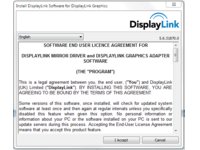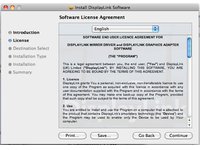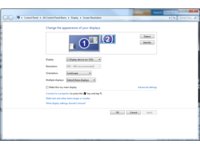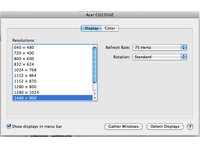USB Monitors? DisplayLink's Technology, Examined
DisplayLink Software Installation: Completely Seamless


There’s a huge selection of DisplayLink products, which makes support a challenge. Some USB-to-VGA/DVI adapters are backed by older drives, while some USB-based monitors don't even include Mac OS X drivers. The real secret is that every USB-based graphics device uses DisplayLink’s technology, even if its vendor doesn’t say so. After all, nobody's interested in admitting their product is identical to others on the market. That also means that you can use the drivers posted to DisplayLink's Web site if you find yourself using an adapter or monitor that doesn't seem to support your configuration, based on its manufacturer's documentation.


Despite divergent driver versions and support issues, circling back to DisplayLink's own software package gives us a sense of universality. Thus, setup is a breeze.
After driver installation, plug in your DisplayLink device and you're ready to roll. Whether you're talking about a USB-based monitor or a display attached more conventionally via DVI or VGA, the connected display is integrated into the OS' display settings. The resulting benefit is a graphics technology that employs a standardized bus and is as easy to use as any other display. There's only one oddity, which involves Mac users. For whatever reason, it's not possible to perform screen captures on a DisplayLink-enabled monitor.
You should be aware that driver updates don’t just provide better compatibility. DisplayLink tells us it continuously optimizes its encoding and compression algorithms.
The Driver Black Box
Interestingly, DisplayLink devices aren't listed under "Display Adapter" in your Device Manager. They have their own category under "USB Display Adapter." The driver itself doesn't reveal much, though.
Get Tom's Hardware's best news and in-depth reviews, straight to your inbox.
Current page: DisplayLink Software Installation: Completely Seamless
Prev Page DisplayLink Explored: What's Going On? Next Page Performance Scaling Depends On Your Workload-
vdr369 looking good, and pretty useful too, it is very useful for notebook users, does this product released in India.Reply -
soccerdocks My notebook has 3 extra outputs. VGA, HDMI, and Display Port. That's plenty for me. I don't see too much of a use for this.Reply -
nevertell When are we going to see DP connectors on most mainstream graphics cards and monitors ?Reply -
SteelCity1981 So when USB 3.0 ports goes to 100w this will eliminate the need for a display link i'd imagine.Reply -
mister g nevertellWhen are we going to see DP connectors on most mainstream graphics cards and monitors ?When Nvidia does so on all their graphics cards, and when manufacterer's finally get the big idea and choose between paying for Displayport or to the DVI Consortium. IGPs also need to switchover or else it won't work.Reply -
WyomingKnott soccerdocksMy notebook has 3 extra outputs. VGA, HDMI, and Display Port. That's plenty for me. I don't see too much of a use for this.For you, no. Other people might find it useful, though. Especially with ultra-portables or other compact devices that tend to have only USB and headphone ports.Reply -
JohnnyLucky I didn't know modern laptops, notebooks, and ultra notebooks might not come with with connections for an external display. I would have thought a connection for an external display would have been standard. Way back in 1993 I purchased a Sony laptop that had an extra video connection. I used it to connect a 21 inch flat screen CRT monitor.Reply -
jamie_1318 I don't think I've ever seen a laptop without at least one external monitor plug. I don't see that being useful to me at least because I don't see needing three screens on a laptop in the immediate future. (I can already dual screen by using the Notebook's display).Reply
SteelCity1981So when USB 3.0 ports goes to 100w this will eliminate the need for a display link i'd imagine.
laptops don't have 100w of power to output to a external GPU, they are probably not going to be on board with this technology. Besides which USB3 is nowhere near fast enough to feed data to a Graphics card in real time, without ever bothering to talk about latency or data-loss. It might be useful if they put very low end Graphics card and powered them off of the USB port, I don't see it becoming common enough to obsolete display port for some time.
-
soccerdocks WyomingKnottFor you, no. Other people might find it useful, though. Especially with ultra-portables or other compact devices that tend to have only USB and headphone ports.My point wasn't that there was no use for this. Merely that there was a small market for this product.Reply -
ram1009 I find myself disagreeing with the whole premise of this topic. Why would anyone want to use a portable while there was a more powerful desktop nearby? It just doesn't compute. IMHO, portables are only to be used for those things you can't do on a desktop.Reply